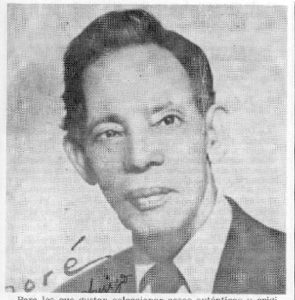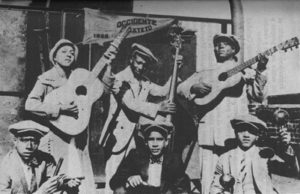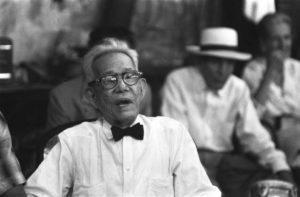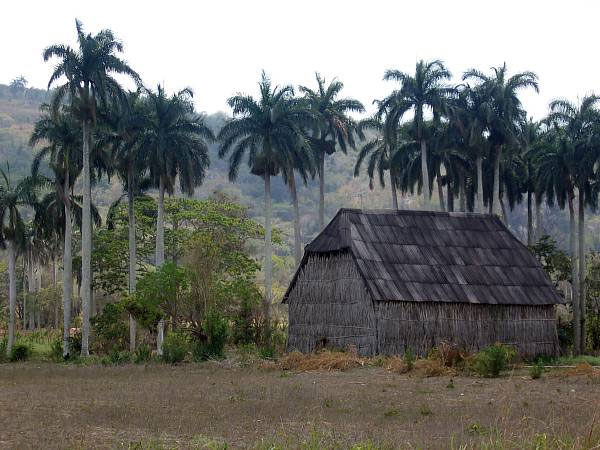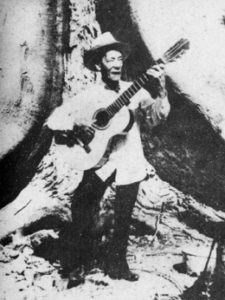SINDO GARAY, CUBA’S BEST TROUBADOUR.
Antonio Gumersindo Garay Garcia, known as Sindo Garay was a Cuban musician, one of the best troubadours of Cuban music, an authentic popular genius.
Sindo Garay was born on April 12, 1869, in Santiago de Cuba. At home, very poor, never missed however the charm of the music. “In my house always had one, two and up to three guitars, not counting those of MOM and Dad”.
Even remembers the Troubadour that her mother was sleeping it child singing La Bayamesa, in lawns, Castle and Fornaris. Years later, in 1918, Sindo str to our musical history his own wife Bayamesa.
He was creator of more than 600 works that portray the Cuban idiosyncrasy; his themes include his admiration for his native land, landscapes, women and love. His creations include: bitter truths, Mujer bayamesa, Guarina, evening, Pearl, returns and fierce torment. Not by chance, Antonio Gumersindo Garay Garcia was baptized by Federico García Lorca as the great Pharaoh of Cuba.
At the age of 16 would arrive first guitar, a gift for his brother. At that same age would begin to autoalfabetizarse to not to answer a letter from love of a girl. The songs had already appeared; with only 12 years, on the banks of the Guaso River was born the first “sindada”: a quatrain musical to remember a woman. About his life that is that Sindo learned all sorts of circus acrobatics and that more than once he gained the support that work. On the other hand never learned a musical note, however his works have been considered by prestigious lessons of harmony and composition and received and receives numerous accolades for its incredible capacity as creator. In jest, the Troubadour said that his name was sign of your musical ignorance: No-Do, and that without Do composed. As demonstrated by the history really did not you lot know.
The Bayamesa, title used by various Cuban authors in countless works, is perhaps his best-known song. Account being that after a night of Serenade, waking up at a friend’s House, in whose yard had a wall still blackened by the fire of Bayamo, raided it the inspiration and there in a simple paper cartridge scored the verses of his immortal work. Through guitar would come after the melody. Paradoxically, the premiere of this song was for the grossing and the pianist of the cinema – theatre Bayamo, unique wizards that night.
In July 1968, exactly the day 17, died at the age of 101 years the greatest Troubadour of this land of Minstrels. The festival of the trova of that year was dedicated to his memory and his Bayamesa echoed repeatedly in the voices of many troubadours. His impressive funeral and lit cigars and cigars because thus Sindo had asked for it.
The Minstrel, who was singing to his homeland for 89 years, has all the 17 July a congregation of troubadours and friends to the sober Pantheon in the necropolis of Bayamo. There we leave on the slab, new flowers, and in the air, the notes of the song that immortalized this city, his land, his people, his work.
It made frequent use of the chromatic, shaped so successful as surprising. Formed from Villalón, Ruiz and Crown, the greats of the trova group. In 1928 traveled to Paris, along with Rita Montaner and other Cuban musicians, there remained three months doing programs of habaneras. He recorded countless albums. His lyrics reveal poetic beauty. It was a remarkable second voice. He received innumerable tributes and recognitions after the triumph of the revolution. His most important compositions include “Evening”, “Perla marina”, “Yielded”, “Scarlet lips”, “Key to Maceo”, “Back”, “Baracoa”, “Adiós a La Habana”, “Mujer bayamesa”, “Lark”, “hurricane and Palm”, “Fermania”, “Rays of gold”, “Grey afternoon”, “Mermaid eyes” and “Guarina”.
Sindo Garay was a genius, popular, and the most amazing thing is that all the Cuban music that epitomizes his work learned it in life, drew it up in his head, his throat and hands on the guitar.
Only from its excessive sensitivity and ability to synthesize and re-elaborate sound facts, he could, from their ignorance of the musical formal technique, do the works he did.
Agencies/EcuRed/InternetPhotos/Arnoldo Varona/YouTube/THeCubanHistory.com
THE CUBAN HISTORY, HOLLYWOOD.
SINDO GARAY, TROVADOR MAYOR DE CUBA.
Antonio Gumersindo Garay y García, conocido como Sindo Garay fue un músico cubano, trovadores cimeros de la música cubana, un auténtico genio popular.
Sindo Garay nació el 12 de abril de 1869, en Santiago de Cuba. En su casa, muy pobre, nunca faltó sin embargo el encanto de la música. “En mi casa siempre había una, dos y hasta tres guitarras, sin contar las de mamá y papá”.
Incluso recuerda el trovador que su madre lo dormía de niño cantándole La Bayamesa, de Céspedes, Castillo y Fornaris. Años después, en 1918, Sindo legaría a nuestra historia musical su propia Mujer Bayamesa.
Fue creador de más de 600 obras que retratan la idiosincrasia cubana; entre sus temas destacan su admiración por su tierra natal, los paisajes, las mujeres y el amor. Entre sus creaciones encontramos: Amargas verdades, Mujer bayamesa, Guarina, La tarde, Perla, Retorna y Tormento fiero. No por casualidad, Antonio Gumersindo Garay García fuera bautizado por Federico García Lorca como El Gran Faraón de Cuba.
A los 16 años llegaría la primera guitarra, regalada por su hermano. Con esa misma edad comenzaría a autoalfabetizarse al no poder contestar una carta de amor de una muchacha. Las canciones ya había aparecido; con solo 12 años, a orillas del río Guaso nació la primera “sindada”: una cuarteta musicalizada para recordar a una mujer. Sobre su vida vale decir que Sindo aprendió toda suerte de acrobacias circenses y que más de una vez se ganó el sustento con ese trabajo. Por otro lado jamás aprendió una nota musical, sin embargo sus obras han sido consideradas por prestigiosos como lecciones de armonía y composición y recibió y recibe numerosos elogios por su increíble capacidad como creador. En broma, el trovador decía que su nombre era muestra de su ignorancia musical: Sin-Do, y que sin Do componía. Como ha demostrado la historia realmente no le hizo mucha falta saber.
La Bayamesa, título muy utilizado por diversos autores cubanos en innumerables obras, es quizás su canción más conocida. Cuenta Sindo que luego de una noche de serenata, al despertar en casa de un amigo, en cuyo patio había un paredón aún ennegrecido por el incendio de Bayamo, lo asaltó la inspiración y allí mismo, en un simple papel cartucho anotó los versos de su inmortal obra. Guitarra mediante llegaría después la melodía. Paradójicamente, el estreno de esta canción fue para la taquillera y el pianista del cine- teatro Bayamo, únicos asistentes esa noche.
In julio de 1968, exactamente el día 17, moría a la edad de 101 años el más grande trovador de esta tierra de juglares. El festival de la trova de ese año se le dedicó a su memoria y su Bayamesa resonó en repetidas ocasiones en las voces de muy diversos trovadores. En su impresionantes funeral y se encendieron tabacos y cigarros porque así lo había pedido Sindo.
El juglar, que le estuvo cantando a su patria durante 89 años, tiene todos los 17 de julio una congregación de trovadores y amigos ante el sobrio panteón en la necrópolis de Bayamo. Allí dejamos sobre la losa nuevas flores, y en el aire, las notas de la canción que inmortalizara a esa ciudad, a su tierra, a su gente, a su obra.
Hacía uso frecuente de los cromatismos, en forma tan acertada como sorprendente. Formó con Villalón, Ruiz y Corona, el grupo de los grandes de la trova. En 1928 viajó a París, junto a Rita Montaner y otros músicos cubanos, allí permaneció tres meses haciendo programas de habaneras. Grabó infinidad de discos. Sus letras revelan belleza poética. Fue una voz segunda notable. Recibió innumerables homenajes y reconocimientos después del Triunfo de la Revolución. Entre sus composiciones más importantes figuran “La tarde”, “Perla marina”, “Rendido”, “Labios de grana”, “Clave a Maceo”, “Retorna”, “La baracoesa”, “Adiós a La Habana”, “Mujer bayamesa”, “La alondra”, “El huracán y la palma”, “Fermania”, “Rayos de oro”, “Tardes grises”, “Ojos de sirena” y “Guarina”.
Sindo Garay fue un genio popular, y lo más increíble es que toda la música cubana que rezuma su obra la aprendió en la vida, la elaboró en su cabeza, su garganta y sus manos sobre la guitarra.
Sólo a partir de su desmesurada sensibilidad y capacidad para sintetizar y reelaborar hechos sonoros, pudo, desde su desconocimiento de la técnica musical formal, hacer las obras que hizo.
Agencies/Wiki/EcuRed/InternetPhotos/Arnoldo Varona/YouTube/TheCubanHistory.com
THE CUBAN HISTORY, HOLLYWOOD.



